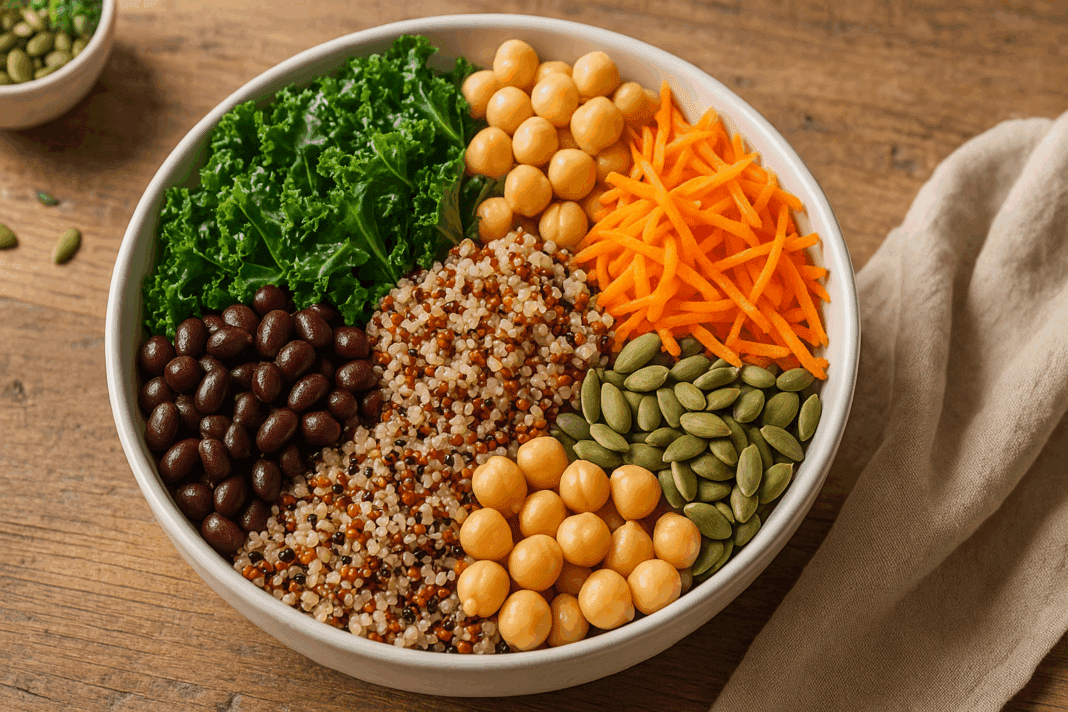Introduction: Rethinking Salad as a Fiber Powerhouse
When most people think of healthy eating, salad typically tops the list. From crisp lettuce and crunchy cucumbers to vibrant carrots and juicy tomatoes, salads are often viewed as synonymous with wellness. Central to this perception is the belief that salads are rich in dietary fiber, a crucial component of gut health and digestive wellness. But how accurate is this assumption? While it is true that many salad ingredients contain fiber, the overall amount and quality of fiber in salad can vary significantly depending on its composition. Understanding the real nutritional impact of salad means digging deeper into the specifics of fiber content, dietary sources, and digestive benefits. In this article, we will explore the surprising truth about fiber in salad, examining whether this staple of health-conscious diets lives up to its gut-healthy reputation.
You may also like: The Ultimate Guide to Gut Healthy Meals: Best Meals for Gut Health and Nourishing Recipes You’ll Love
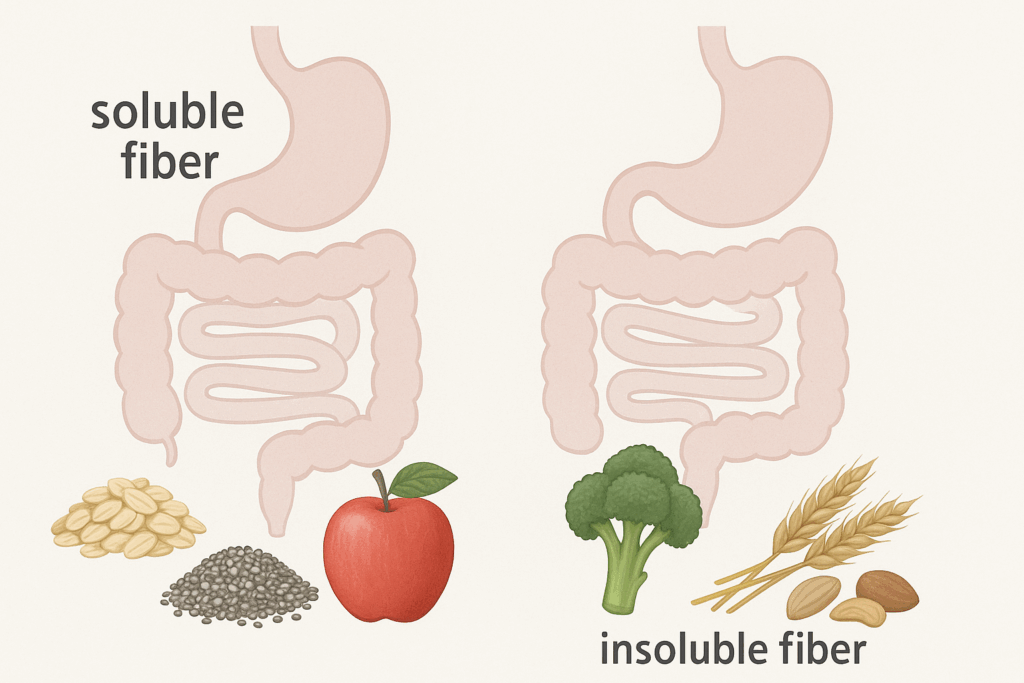
Understanding Dietary Fiber and Its Role in Gut Health
To evaluate how much fiber is in salad, we first need to understand what dietary fiber is and why it matters. Dietary fiber, also known as roughage or bulk, is the indigestible part of plant foods. It passes through the digestive tract relatively intact, helping to regulate bowel movements, lower cholesterol, and support blood sugar control. There are two primary types of fiber: soluble and insoluble. Soluble fiber dissolves in water and forms a gel-like substance that slows digestion, while insoluble fiber adds bulk to stool and aids in preventing constipation.
Fiber is essential for maintaining a healthy gut microbiome. It serves as a prebiotic, nourishing the beneficial bacteria in the colon that play a key role in immune function, nutrient absorption, and inflammation control. Fiber also contributes to satiety, or the feeling of fullness, making it helpful for weight management. Given these benefits, it is no surprise that fiber-rich diets are associated with reduced risks of heart disease, type 2 diabetes, and colorectal cancer.
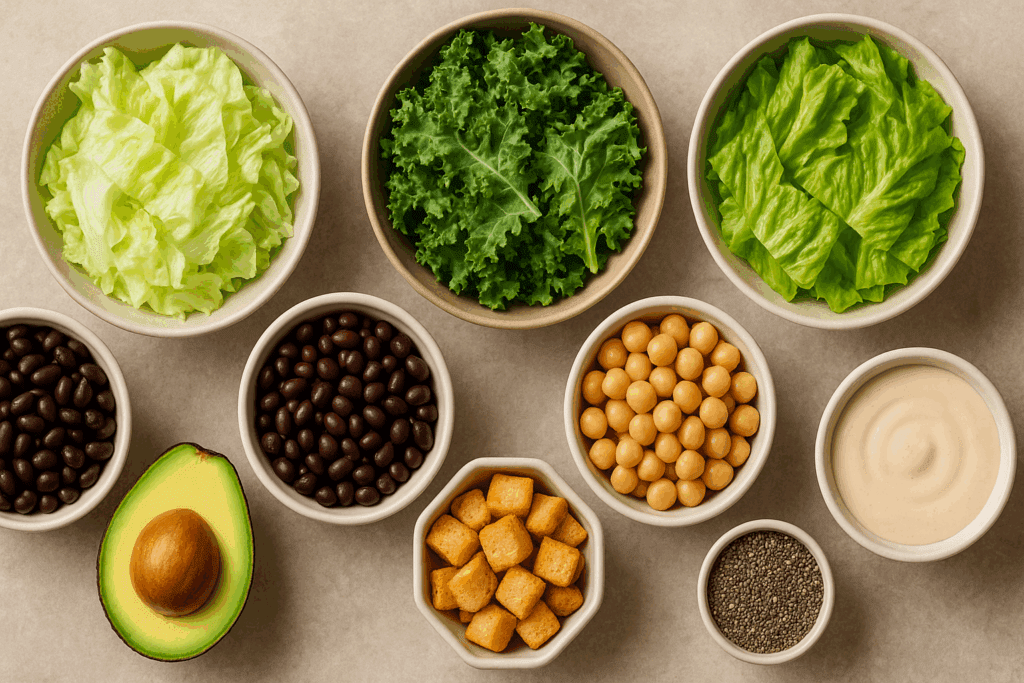
Breaking Down the Fiber in Salad Ingredients
The phrase “fiber in salad” can be misleading because it implies a standardized amount or quality of fiber across all salads. However, the fiber content of a salad is entirely dependent on the types and quantities of vegetables, fruits, legumes, grains, nuts, and dressings it includes. For example, iceberg lettuce, a common base for many salads, contains about 0.9 grams of fiber per cup. In contrast, romaine lettuce offers 1.2 grams, and kale packs in about 2.6 grams per cup.
Leafy greens alone contribute modest amounts of fiber, but the real fiber punch often comes from additional ingredients. Adding a half cup of black beans introduces nearly 7 grams of fiber, while a quarter cup of chickpeas adds about 3 grams. Avocados, another popular salad addition, provide nearly 10 grams of fiber per fruit. Chia seeds, when sprinkled in, contribute soluble fiber that supports digestive regularity. On the other hand, croutons and creamy dressings add little to no fiber while increasing calorie and fat content.
How Much Fiber in Salad Depends on What You Put In It
If you’re wondering how much fiber in salad is typical, the answer is: it varies. A basic garden salad with lettuce, tomato, cucumber, and carrots might provide only 3 to 5 grams of fiber per serving. However, a well-constructed salad with beans, seeds, whole grains, and leafy greens can deliver upwards of 10 to 15 grams. Considering the recommended daily intake of fiber is 25 grams for women and 38 grams for men, a thoughtfully prepared salad can contribute significantly to daily fiber goals.
Yet, many pre-packaged salads and restaurant offerings fall short of being true fiber powerhouses. Often, they emphasize convenience and flavor over nutritional balance, including processed toppings like bacon bits, cheese, or sweetened dried fruits, which offer little fiber but plenty of sugar and saturated fat. To maximize fiber intake, it’s important to choose whole, minimally processed ingredients and balance your salad with protein and healthy fats.

Does Salad Have Fiber? Dispelling Common Misconceptions
One of the most common questions among health-conscious eaters is: does salad have fiber? The short answer is yes—but not always as much as people think. The assumption that salad is inherently high in fiber stems from its plant-based nature. However, not all plant foods are equal in their fiber content. For instance, cucumbers and tomatoes are hydrating and low in calories but relatively low in fiber. Conversely, vegetables like broccoli, cauliflower, and Brussels sprouts contain higher fiber concentrations and make excellent salad additions.
Moreover, the preparation method matters. Finely chopped or shredded vegetables retain their fiber, but juicing or overcooking them can reduce their fiber content. Raw vegetables generally provide more fiber than cooked ones, making raw salads a better choice for those seeking maximum gut health benefits. Adding fiber-dense ingredients such as legumes, quinoa, or farro can elevate the fiber profile significantly.
Is Salad High in Fiber? A Closer Look at Nutrient Density
The question “is salad high in fiber?” cannot be answered without context. As discussed, the fiber content of salad depends on the ingredients used. A salad consisting mostly of iceberg lettuce and croutons would not be considered high in fiber, whereas a bowl featuring kale, lentils, and sunflower seeds certainly would. Nutrient density refers to the concentration of essential nutrients per calorie of food. In this regard, a salad’s fiber density improves dramatically with the inclusion of dark leafy greens, legumes, whole grains, and fibrous vegetables.
It’s worth noting that fiber isn’t the only nutritional component that makes salads beneficial. They are also rich in antioxidants, vitamins A and C, potassium, and folate. But for individuals specifically targeting digestive health or managing conditions like constipation or high cholesterol, prioritizing fiber-rich components is key. A high-fiber salad should include both soluble and insoluble fiber sources to promote a healthy gut and regular digestion.
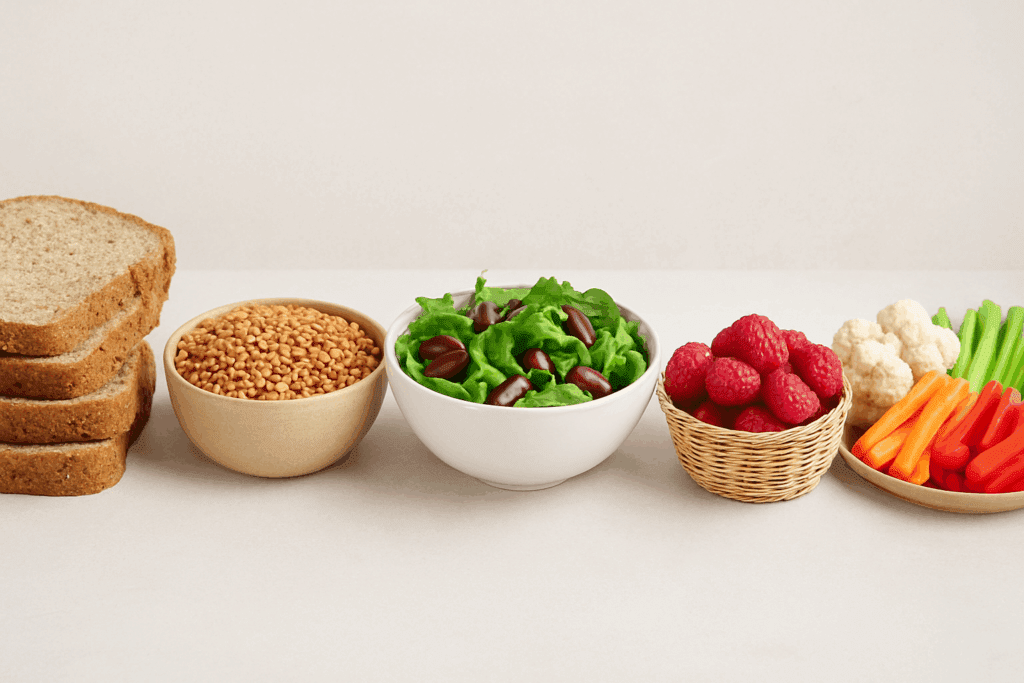
Fiber in Salad vs. Other Common Fiber Sources
While salads can be a good source of fiber, they are not necessarily superior to other dietary options. For example, whole grains like oats, barley, and brown rice are more concentrated sources of fiber than most salad greens. Legumes, including lentils and kidney beans, are fiber powerhouses that consistently outperform raw vegetables in fiber content. Even some fruits, like raspberries and pears, offer more fiber per serving than typical salad ingredients.
An interesting comparison arises when considering bread. Many people ask, “is bread fiber?” or rather, “does bread contain fiber?” The answer depends on the type of bread. Whole grain and sprouted breads contain significantly more fiber than refined white bread, which is often stripped of its bran and germ during processing. Including whole grain croutons or a slice of whole wheat bread alongside your salad can enhance the fiber content of your meal, provided it aligns with your dietary goals.
On the more controversial side, questions about “fiber foods meat” often surface in dietary discussions. It’s important to clarify that animal products, including meat, do not contain dietary fiber. Fiber is found exclusively in plant-based foods. Therefore, a meat-based salad will need to rely on plant ingredients to provide digestive benefits. While lean meats can be a good source of protein, they should be paired with high-fiber vegetables and grains to support gut health.
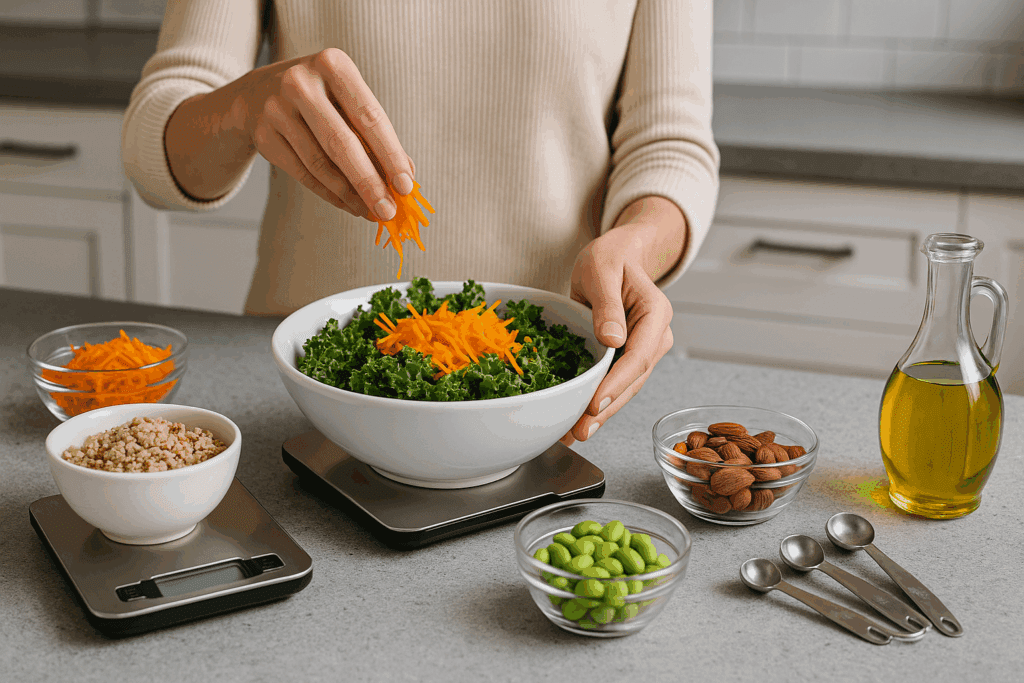
How Much Fibre in Salad? A Global Perspective on Dietary Practices
Exploring “how much fibre in salad” from a global perspective reveals interesting cultural dietary patterns. In Mediterranean cuisine, for example, salads often include fiber-rich staples like chickpeas, lentils, olives, artichokes, and fresh herbs, making them nutritionally balanced and gut-friendly. In contrast, Western fast-food interpretations of salad may prioritize convenience and flavor over fiber, resulting in lower nutritional quality.
In many Asian cultures, salads incorporate seaweed, tofu, cabbage, and root vegetables such as daikon and carrots—all of which contribute to the fiber profile. Latin American salads frequently include beans, corn, and avocados, offering a spectrum of soluble and insoluble fiber sources. These examples highlight the importance of culinary diversity in achieving optimal fiber intake through salads.
Dietary education plays a significant role in shaping perceptions of fiber content in salad. In regions where plant-based diets are prevalent, fiber-rich salads are more common and better understood. Conversely, in countries where processed foods dominate, individuals may equate salad with any mixture of greens and toppings, regardless of nutritional content. Awareness and cultural knowledge are key to making fiber-informed choices.
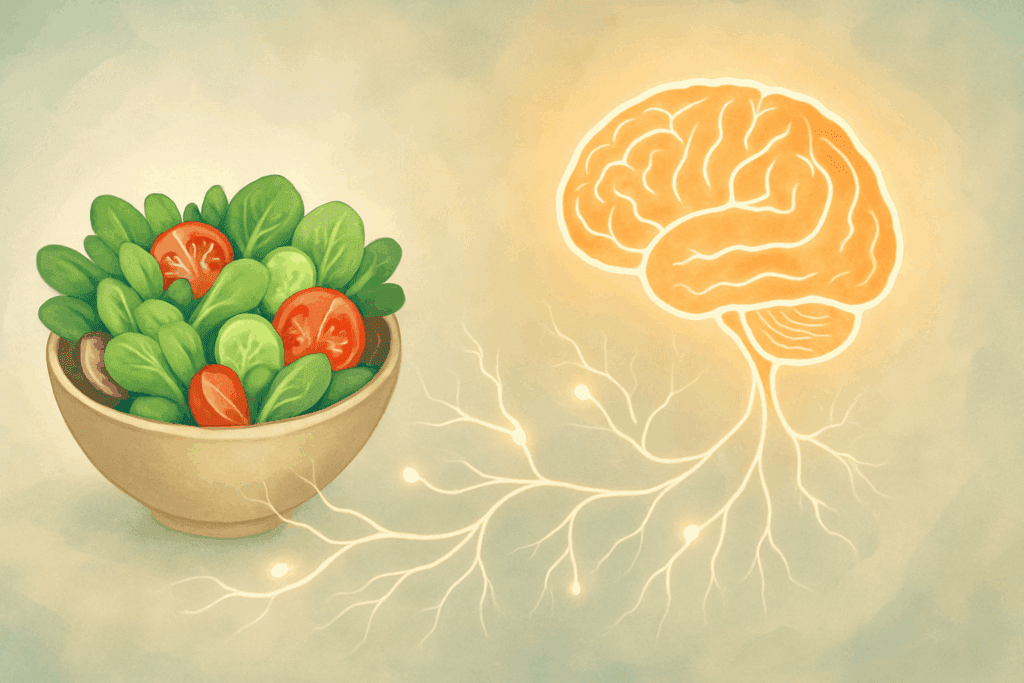
Practical Tips to Maximize Fiber in Salad Without Sacrificing Taste
Crafting a high-fiber salad that is both nutritious and delicious involves strategic ingredient selection. Start with a base of dark leafy greens like spinach, arugula, or kale, which offer more fiber than iceberg lettuce. Incorporate at least one legume such as black beans, chickpeas, or edamame for a protein-rich and fiber-dense addition. Add whole grains like quinoa, bulgur, or farro to boost the fiber profile and add texture.
Vegetables such as bell peppers, broccoli, and shredded carrots increase bulk and contribute both fiber and antioxidants. Including nuts and seeds, such as almonds, flaxseeds, or pumpkin seeds, adds crunch, flavor, and soluble fiber. Dried fruits, when unsweetened and used sparingly, can offer additional fiber and natural sweetness. Avoid creamy dressings high in saturated fat and opt for vinaigrettes made with olive oil and lemon juice to maintain gut-friendly integrity.
Balancing flavors is essential for enjoyment. Acidic ingredients like citrus and vinegar brighten the palate, while healthy fats from avocados or nuts provide satiety. The combination of textures, colors, and flavors not only enhances the eating experience but also ensures a spectrum of nutrients, including fiber. A salad that is vibrant, satisfying, and fiber-rich is more likely to become a consistent part of your dietary routine.
Are Salads High in Fiber? The Verdict Depends on Composition
So, are salads high in fiber? The answer is nuanced. A salad can be an exceptional source of dietary fiber if crafted thoughtfully. It can also be disappointingly low in fiber if made with minimal plant diversity and heavy on processed ingredients. Evaluating the fiber in salad involves looking beyond assumptions and understanding ingredient composition.
The variability in salad construction means that each bowl has a different fiber profile. A well-balanced salad that includes legumes, seeds, whole grains, and a variety of vegetables will likely support gut health and help meet daily fiber recommendations. On the other hand, a salad comprised primarily of iceberg lettuce, cheese, and bacon bits will fall short.
To make salads a reliable fiber source, consider them a canvas for nutrient-dense foods. Let each component serve a functional purpose, from digestion-aiding fiber to heart-healthy fats and essential vitamins. With the right approach, your salad can transform from a side dish into a powerhouse meal.
Frequently Asked Questions: The Truth About Fiber in Salad and Beyond
How can I accurately measure how much fiber in salad I’m eating?
Determining how much fiber in salad you’re consuming starts with knowing the exact ingredients and their respective portions. Most packaged foods come with nutritional labels, but when preparing salads at home or ordering them at a restaurant, estimates become more necessary. A reliable strategy is to use a digital food scale along with a nutrition tracking app that lists fiber content by weight or volume. For instance, a half-cup of black beans adds nearly 7 grams of fiber, while one cup of chopped kale contributes about 2.6 grams. Fiber calculators and USDA databases can provide more precise breakdowns, which is especially helpful for those managing conditions like IBS, diabetes, or high cholesterol where fiber regulation matters.
Does salad have fiber even when made with just iceberg lettuce?
Yes, but in minimal amounts. Iceberg lettuce is largely composed of water, offering a crisp texture and hydration, but delivering only about 0.9 grams of fiber per cup. This leads to a common misconception that all salads are equally beneficial for gut health. While iceberg lettuce does contribute some roughage, it should be considered more of a hydrating base than a substantial fiber source. To optimize the answer to “does salad have fiber,” one should consider supplementing with spinach, shredded carrots, or legumes. These additions help build a salad that better supports digestive and metabolic health.
Fiber in salad bowls: How to elevate your intake without changing the taste
Maximizing fiber in salad without compromising flavor is all about subtle, strategic enhancements. For example, you can blend tender leafy greens like spinach with stronger greens like arugula or kale to preserve palatability while increasing fiber. Finely shredding cabbage or adding julienned jicama introduces crunch and bulk with little alteration in taste. Roasted chickpeas or lightly salted sunflower seeds offer textural contrast and fiber without overwhelming the flavor profile. A tablespoon of flaxseed or chia seeds stirred into a light vinaigrette can elevate the fiber content discreetly. With the right balance, boosting fiber in salad becomes a seamless culinary upgrade.
How much fibre in salad do I need to support gut microbiome diversity?
While most dietary guidelines recommend 25 to 38 grams of fiber daily, emerging research on the gut microbiome suggests that fiber variety may be just as crucial as quantity. To enhance microbial diversity, which supports immune balance and inflammation regulation, aim to consume 5 to 10 different fiber-rich plant foods daily. This can be achieved by rotating salad ingredients weekly. For example, swapping black beans for lentils, or rotating cruciferous vegetables like broccoli and cauliflower into your salads, introduces different types of fibers that nourish diverse microbial populations. When asking how much fibre in salad supports optimal gut health, the answer lies not only in volume but also in diversity and consistency over time.
Is bread fiber a reliable alternative or addition to salads?
Is bread fiber a comparable option when salads fall short? That depends on the type of bread. Whole grain breads, especially sprouted varieties, can deliver between 3 to 5 grams of fiber per slice, primarily in the form of insoluble fiber. Including a slice of high-fiber bread alongside a salad may help balance the meal, especially if the salad lacks legumes or grains. However, white bread and many commercially produced loaves often undergo refinement that strips away fiber. When selecting bread, always look for labels indicating 100% whole grain or sprouted grains, and aim for products with at least 3 grams of fiber per slice. Used wisely, bread can complement fiber from salads without acting as a crutch for poor composition.
Are salads high in fiber if they’re mostly raw vegetables?
While raw vegetables do contribute fiber, quantity and type are key to answering whether such salads are high in fiber. Lettuce, tomatoes, and cucumbers offer hydration and some fiber, but not in high enough amounts to classify a salad as fiber-rich. In contrast, incorporating cruciferous vegetables like broccoli and cabbage or fiber-dense additions like beans, lentils, or quinoa can significantly increase total fiber. The combination of soluble and insoluble fiber matters for digestive regulation. Without legumes, seeds, or whole grains, raw-vegetable-only salads tend to underdeliver on fiber despite their health halo. Therefore, are salads high in fiber when made only from raw veggies? Not typically, unless designed with intention.
What are the nutritional drawbacks of assuming fiber foods meat are real?
One persistent misunderstanding is believing that meat contributes to daily fiber needs. This assumption stems from marketing blurbs or confusion around protein and fiber content. In truth, fiber foods meat is a contradiction in terms—fiber is exclusively found in plant-based sources. This misunderstanding can lead to diets that are fiber-deficient despite appearing nutrient-dense due to protein intake. It’s essential to pair meat with high-fiber plant foods to maintain digestive function and long-term metabolic balance. If you’re relying on meat-heavy diets, it’s critical to compensate by adding legumes, grains, and fibrous vegetables to every meal, especially in salads.
Is salad high in fiber when consumed as a meal replacement?
The nutritional value of a salad as a meal replacement depends heavily on its ingredients. A balanced, high-fiber salad that includes legumes, whole grains, seeds, and a variety of vegetables can absolutely serve as a meal. However, it must also contain adequate protein and healthy fats to sustain energy and metabolic function. Fiber alone does not create fullness or nutritional adequacy—macronutrient synergy does. To transform a salad into a meal that is high in fiber and complete, include elements like grilled tofu, quinoa, avocado, and mixed greens. A well-composed bowl can rival many traditional meals in both fiber and nutrient density, making it a worthy, satisfying alternative.
How does fiber in salad support emotional and cognitive health?
There is a growing body of evidence linking dietary fiber to brain function and mood regulation via the gut-brain axis. When fiber in salad feeds the gut’s beneficial bacteria, short-chain fatty acids (SCFAs) like butyrate are produced, which have neuroprotective and anti-inflammatory effects. These SCFAs help regulate the production of neurotransmitters such as serotonin, which influences mood and emotional balance. Over time, consistent intake of high-fiber meals like salads may reduce symptoms of anxiety and depression by supporting microbiome health. This makes fiber in salad not only a tool for physical wellness but also a proactive choice for mental clarity and emotional resilience.
Can optimizing how much fiber in salad you eat affect long-term weight management?
Yes, and in more ways than one. Eating adequate fiber in salad has a direct impact on satiety, delaying gastric emptying and promoting feelings of fullness. This can help prevent overeating later in the day and reduce reliance on calorie-dense snacks. Moreover, high-fiber diets have been shown to regulate hormones involved in appetite control, such as ghrelin and peptide YY. Over time, regularly consuming fiber-dense salads can support a healthier body weight by reducing caloric intake naturally, without restrictive dieting. Optimizing how much fiber in salad you consume may thus serve as a long-term strategy for sustainable weight maintenance and metabolic health.
Conclusion: Optimizing Fiber in Salad for Lasting Gut Health
In closing, understanding the reality of fiber in salad empowers individuals to make informed, health-promoting choices. While salads have long been associated with wellness, their actual fiber content hinges on thoughtful ingredient selection. Whether you’re asking how much fiber in salad or wondering if a particular dish qualifies as high in fiber, the answer depends on composition, diversity, and preparation.
Does salad have fiber? Yes. Is salad high in fiber? Sometimes. The difference lies in choosing ingredients that are naturally rich in both soluble and insoluble fiber and avoiding processed components that detract from nutritional value. Awareness of how much fibre in salad is present—and how that compares to other foods like bread or legumes—is key to crafting meals that support digestive wellness.
Fiber is a cornerstone of holistic gut health and a vital part of a balanced diet. By treating salad as an opportunity for nutrient synergy rather than a dietary default, individuals can reap its full benefits. With intention and creativity, the next salad you eat can be both a culinary delight and a gut-friendly powerhouse.

